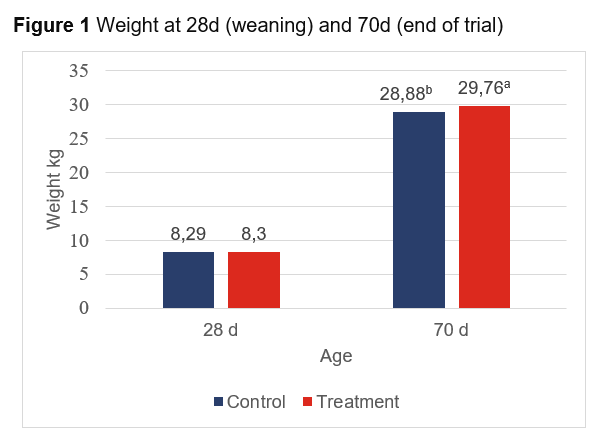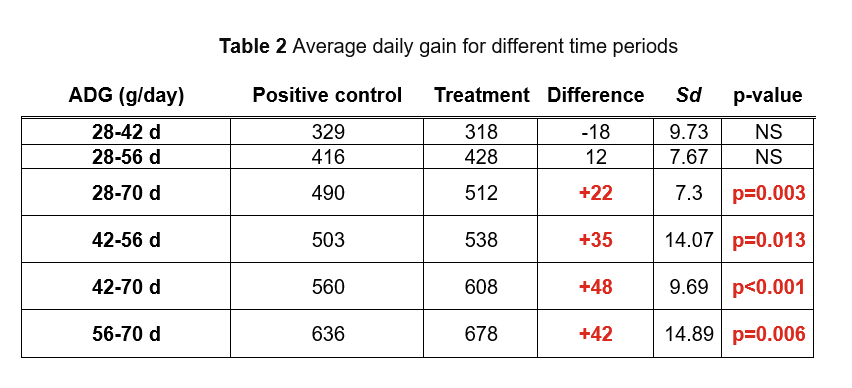The gut revolution Conquering post weaning diarrhoea whilst having a ROI of 1:5, is it possible?
In the dynamic landscape of pig farming, adaptation is key. Since the very beginning, European pig producers have embraced a journey of innovation and sustainability, which put us at the forefront of welfare and environmental regulations. But let's be clear – this isn't about bans or limitations; it's about, progress and evolution.
Reflecting on the last three to four decades, we have collectively learnt invaluable lessons on how to produce more and be more efficient. As time passed focus shifted to other areas such as animal welfare, antibiotic, Zinc oxide and carbon footprint reduction. As pioneers in sustainable farming, European pig producers have always risen to the challenge recognising that reducing the use of certain products doesn’t mean compromising on performance or animal welfare.
Through a collaborative effort with researchers, nutritionists, and industry experts, European pig producers have explored alternative strategies to support piglet health and growth. From fine-tuning nutrition (protein reduction to levels below 16%), optimizing management practices (increasing temperature, cleaning, and disinfection) to embracing innovative feed additives, we've unlocked a wealth of possibilities. It is always the dream to find one solution product or component that will help in reducing post weaning diarrhoea, we kind of had that with Zinc oxide which had multiple functions, unfortunately, we haven’t found yet one product that will replace it with all of it functions, but we have several products that could target each of them.
have explored alternative strategies to support piglet health and growth. From fine-tuning nutrition (protein reduction to levels below 16%), optimizing management practices (increasing temperature, cleaning, and disinfection) to embracing innovative feed additives, we've unlocked a wealth of possibilities. It is always the dream to find one solution product or component that will help in reducing post weaning diarrhoea, we kind of had that with Zinc oxide which had multiple functions, unfortunately, we haven’t found yet one product that will replace it with all of it functions, but we have several products that could target each of them.

But enough with the alternatives, we will focus on each individual group in the next articles where on top looking at the different options on each group we would like to share some experiences and lessons learnt from the Europe and abroad on reducing post weaning diarrhoea. Let’s start today with an example in UK in collaboration with Writtle University college and presented at ESPHM 2023.

Set-Up
- Farm located in the UK semi commercial trial facility:
- 3 week batch farrowing – side by side trial
- Weaning age 28 days
- 380 piglets used in the study (190 control – 190 treatment)
The objective of the trial was to compare a diet including probiotics, encapsulated organic acids and immunomodulators against a positive control which had zinc. The main reason why a positive control was used is because a second part of the objective was to find a combination which will benchmark the best product there is on the market although it cannot be used anymore.
Diets
Probiotic (Pro)– Bacillus sp. PB6 to promote and maintain the natural positive gut flora and minimize the risk posed by Clostridia.
Encapsulated Organic Acids (EOA)- Encapsulated organic acids with proven mode of action against E.Coli
Immunomodulator (IMM)- beta-(1,3)- glucan to help modulate the damages caused by inflammation and stress cause after weaning
Diets fed were as follow:

Measurements:
- Mortality
- Weight and average Daily Gain (ADG)
- Faecal samples scores at 28, 42, 56 and 70 days, faecal scores following Perez-Calvo et al 2019 method.
Results:
- No difference observed in mortality, which is a positive result comparing the diet to the gold standard.
- With Diet 1 there were no significant differences in final weight and ADG.
- Final body weight at day 70 significantly increased by 880g p<0.05 at the end of the trial, showing a positive effect on Diet 1 facing the weaning challenges and an advantage on Diet 2 increasing the performance. Refer to figure 1

- Overall, from weaning to day 70 there was a significant increase in 22g/day (490g/day vs 512g/day) p<0.05.
- With diet 2 we saw significant differences in ADG with a 48g/day (p<0.05) increase from day 42 do 70. Refer to table 2

- No significant differences were seen in the faecal analysis.
Financial Implications:
If we consider the worst-case scenario that the lower ADG which was 22g/day remains from day 28 (weaning) until day 130 (Slaughter) we will get an extra 2.25kg at slaughter or roughly 2.5 days less to market. At current market prices the new solution will break even by selling 0.2kg extra per pigs or rearing them 1/3 of a day faster. Just focusing on performance up to day 70 this can have a return on investment of 1:5!
To sum up, a combination similar to the one described is worth looking at!
Bibliography
E. Pérez-Calvo, A.N. Wicaksono, E. Canet, E. Daulton, W. Ens, U. Hoeller, V. Verlhac, P. Celi, J.A. Covington, The measurement of volatile organic compounds in faeces of piglets as a tool to assess gastrointestinal functionality, Biosystems Engineering,Volume 184,2019,Pages 122-129,ISSN 1537-5110,https://doi.org/10.1016/j.biosystemseng.2019.06.005. (https://www.sciencedirect.com/science/article/pii/S1537511019303678)
#(guia_solicitar_presupuesto)
#(guia_datos_presupuesto)

